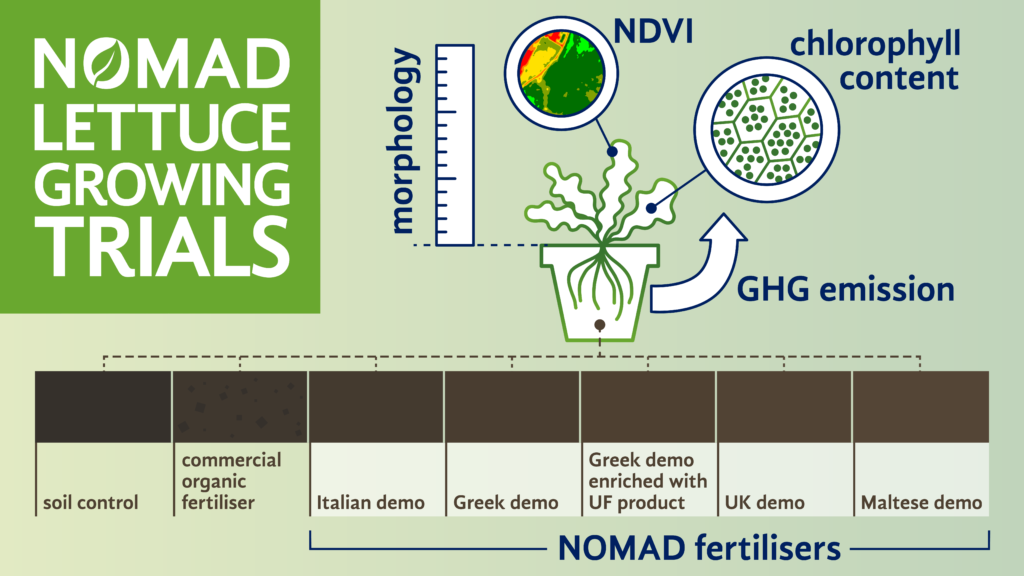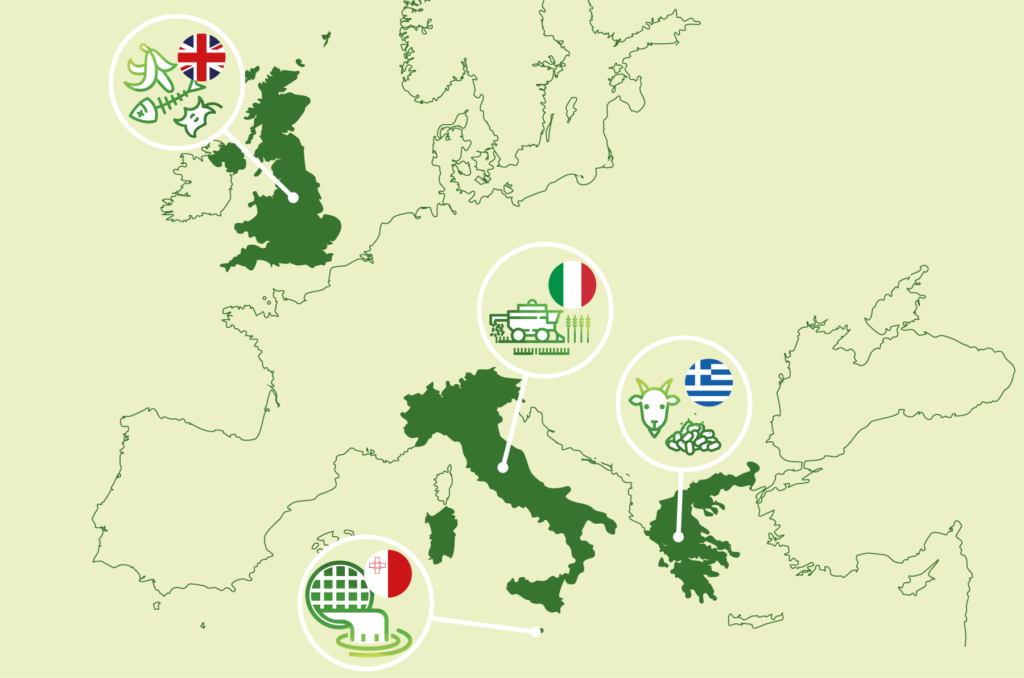Field trials
Set-up
Field trials were conducted in early 2023 with the specific objective of evaluating the performance of the NOMAD fertilisers originating from the four demo countries.
By comparing the fertilizers from each country with each other, as well as with a local commercial organic fertiliser and a control group without fertiliser, the researchers aimed to determine the effectiveness and impact of these fertilisers on the growth and yield of lettuce (Curly variety).
Growing lettuce
These experiments were conducted simultaneously in all four demo countries under controlled conditions in a greenhouse. Lettuce plants were grown in pots with a diameter of 40 cm. To ensure optimal growing conditions, a pot irrigation schedule was established to ensure that the lettuce plants were not subjected to water restrictions during their growth cycle. Regular measurements were taken throughout the experimental period to monitor the development of the lettuce.
Measurements
Various parameters were measured at regular intervals to evaluate lettuce performance. These measurements included yield (where both dry and fresh mass of harvested lettuce were measured), plant growth (determined by measuring the height and diameter of the plants), SPAD, which indicates chlorophyll content, and use of the ‘Greenseeker’, an indirect measure of nitrogen content, were also recorded.
Before planting the lettuce, the local soil in the pots was mixed with the respective fertilisers. All four demo countries used NOMAD fertiliser from all countries. The composition of the soil, including the percentage of sand, silt, and clay, as well as total nitrogen and total organic matter, was previously characterized.
Before mixing with the soil, each fertiliser was also subjected to characterization, during which certain parameters were evaluated. These included pH, carbon content (C), nitrogen content (N), phosphorus content (P), and potassium content (K). These analyses provided valuable information on the composition and nutrient content of the fertilisers and allowed a comprehensive understanding of their properties.
Fertiliser sources
All fertilisers used in the field trials were derived from the solid fraction of digestate treated with NOMAD Trailer 2. Each fertiliser came from a different biogas plant, and the sources of the digestate varied from country to country.
- The Greek NOMAD fertiliser was derived from digestate from pig manure and sewage sludge from the Mpisiritsas biogas plant.
- The Maltese NOMAD fertiliser used digestate from municipal wastewater from the Ta’Barkat wastewater treatment plant.
- The Italian NOMAD fertiliser was obtained from digestate from agricultural waste from the AgriPower Plus biogas plant.
- Finally, the UK NOMAD fertiliser was derived from digestate from food waste at the Mallaby biogas plant.
These different sources of digestate reflect the potential of converting various organic materials into nutrient-rich fertilisers.

